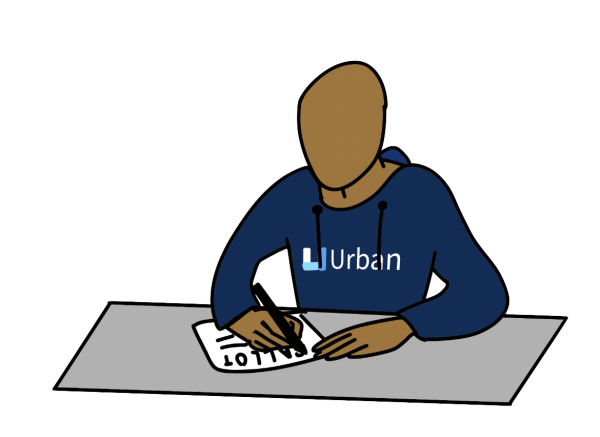On March 5, 2024, over 15 Urban seniors voted for the first time. However, some still felt unprepared for the voting process. From presidential elections to local propositions, it can be hard for high schoolers to educate themselves about what is on the ballot. Even some adults feel the voting system can be difficult to navigate.
“I think some of the propositions in California are really tricky, and so it feels like I’m being manipulated,” said Service Learning Teacher Kristjiana Gong. “I have to do some deep-dive research to figure out what exactly is happening.”
Urban tries to help its students overcome the learning curve for casting ballots. With classes like Service Learning, Civics and Society and Constitutional Law, students have opportunities to learn about governmental systems in the United States. Yet, some students feel shaky about the voting process.
Urban tries to offer education that is applicable beyond the classroom. One of the school’s Core Values states, “Learning extends beyond the classroom to instill in students a sense of mission and purpose as citizens of the larger community and world.” But how much of Urban’s curriculum actually applies to real-world forms of civic engagement, such as voting?
“I do wish that Urban did a little bit more to [encourage us to vote],” said Kaia Garvens ‘24. “I hear a lot more stuff about voting in elections [from other students than] I do from the faculty.”
Some students think that skills gained from school assignments can be applied to voting. “There are projects in Service [Learning] where you can present on … voter fraud, voter education and how to be prepared [for] elections,” said Aidan Somaini ‘24. “My group did a presentation on voter turnout. Through that project, I [was] prepared [to vote] because I had to do research [on it].”
Faculty members also support student advocacy through the service curriculum. “[The] passions of the teachers, the orientation of the curriculum, the way that we really are driven by student voice — the Service curriculum in particular really emphasizes a sense that [students] have a place in the world and have responsibility,” said Gong.
Regarding voter education, Jeremiah Rosenfels, a Service Learning teacher, believes that hands-on experiences provide excellent opportunities for students to learn. “In other schools I’ve taught [at], there is almost always a government course that does exit poll interviews. So a group of students leave school and go to a [polling place,]” he said. “They go interview people afterward, and they get anonymous exit poll interviews to understand the issues. Not only are they seen taking apart the political process, … [but] this also makes it visually so they can see themselves in this process in the future.”
However, integrating voting education into the curriculum poses more challenges than it might seem. “Voter literacy is a hard thing to just throw into a school setting,” said Garvens. “Because how do you prepare people for voting without also imposing … political beliefs or thoughts on students?”
When asked if it was the school’s responsibility to teach students about voting, Somani said, “Do I think it is ethically wrong that they are not? No. [But] do I think it promotes a more educated student body? Yes.”
Aside from adding voting education into the curriculum, social media can also influence the way students vote. “There’s stuff that I voted for in terms of propositions that I saw people posting about on Instagram being like, ‘If you voted for so and so proposition, f— you’ or something like that,” Garvens said.
To balance between the two, Urban adults encourage students to make their own informed decisions as young voters. Gong said, “[By] helping you identify your values and your passions and your skills, [Urban helps] you have a sense [of] responsibility to your community.”


